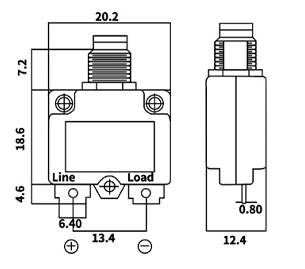Weather Stripping Door Seal Strip An Essential for Home Comfort
As the seasons change, ensuring that your home maintains a comfortable indoor environment becomes a priority for many homeowners. One effective way to enhance your home’s energy efficiency and comfort is through the installation of weather stripping door seal strips. These simple yet effective solutions can make a significant difference in regulating temperature, reducing energy costs, and preventing unwanted drafts.
What is Weather Stripping?
Weather stripping refers to the material used to seal gaps around doors and windows, preventing air leaks and allowing for better insulation. Weather stripping door seal strips are designed to fit around the perimeter of exterior doors, filling in gaps where cold air can enter during the winter and cool air can escape during the summer. These strips come in various materials, including rubber, vinyl, foam, and metal, each with its unique advantages.
Importance of Weather Stripping
1. Energy Efficiency One of the primary reasons homeowners invest in weather stripping is to improve energy efficiency. A significant amount of heat can be lost through poorly sealed doors, leading to higher heating costs in winter months. According to the U.S. Department of Energy, sealing air leaks can save homeowners 10-20% on their heating and cooling bills.
2. Comfort In addition to the economic benefits, weather stripping enhances comfort. By reducing drafts, it helps to create a more stable indoor temperature, ensuring that you can enjoy your space regardless of the weather conditions outside.
3. Noise Reduction Weather stripping not only keeps the air in or out but can also help to minimize external noise. If you live in a busy area or near a noisy street, properly sealed doors can create a more tranquil indoor environment.
4. Pest Control Gaps around doors can also be entry points for unwanted pests, such as insects or rodents. Weather stripping helps to seal these openings, providing an additional layer of protection against pests.
Types of Weather Stripping Door Seal Strips
When choosing a weather stripping door seal strip, it’s essential to consider the different types available
- Adhesive Foam Tape This is one of the easiest options to install. It consists of a strip of foam that has adhesive backing. Simply cut it to size and stick it in place. It works well for irregular gaps.
weather stripping door seal strip

- V seal V seal strip is a flexible material that can compress to effectively seal gaps. It is excellent for areas that require a more permanent solution.
- Metal & Vinyl These strips are more durable and can withstand more wear and tear. They’re commonly used in commercial settings but can also be effective for residential doors, especially for exterior doors that see a lot of traffic.
- Door Sweeps These are installed at the bottom of the doors and serve to block the gap between the door and the floor. They are particularly effective for keeping out drafts and pests.
Installation Tips
Installing weather stripping door seal strips is a straightforward process that many homeowners can tackle themselves. Here are some tips to ensure a proper installation
1. Measure Carefully Before purchasing your weather stripping, measure the gaps around your doors to ensure you buy the correct length and type for your needs.
2. Clean the Surface Before applying adhesive strips, clean the frame and door thoroughly to ensure a good bond.
3. Follow Manufacturer Instructions Each type of weather stripping may have its specific installation steps, so be sure to follow the instructions closely.
4. Conduct a Test Once you've installed the strips, check for drafts using a candle or a smoke pen. If you notice any drafts, you might need to adjust the weather stripping or apply additional material.
Conclusion
Weather stripping door seal strips are a simple and cost-effective solution to enhance the comfort and efficiency of your home. By investing a small amount of time and money, you can significantly improve your indoor environment, reduce energy costs, and protect your living space from pests and noise. It’s a practical home improvement project that anyone can undertake, leading to lasting benefits year-round.
-
Versatility with Tape Electrical InsulationNewsJun.09,2025
-
Floor Marking Tapes For WareHouseNewsJun.09,2025
-
Enhance Your Projects with PVC Electrical TapesNewsJun.09,2025
-
Enhance Your Projects with Automotive Wiring Harness TapeNewsJun.09,2025
-
Enhance Your Automotive Fabric TapesNewsJun.09,2025
-
Enhance Electrical Projects with Cambric TapeNewsJun.09,2025
